|
|
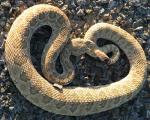
|
Crotalus oreganus concolor - Midget Faded Rattlesnake
|
Description
Grows to a maximum length of 750 mm. The smallest gravid female measured was 522 mm.
The color pattern consists of a pinkish, pale brown, yellow-brown, straw-colored, reddish or yellow-brown ground color, overlaid with a series of brown elliptical or rectangular dorsal blotches. |
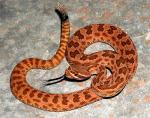
|
Crotalus viridis nuntius - Hopi Rattlesnake
|
Description
The Hopi Rattlesnake is the smallest subspecies of C. viridis. The color is variable and may be pink, gray or orange-brown in color, matching the soil and rock color of their natural range. The back has darker brown blotches. The eyes have vertical pupils, and the tail has a rattle made of keratin. Each time the snake sheds its skin, a new segment is added to the rattle. |
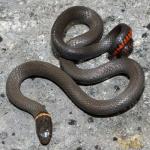
|
Diadophis punctatus arnyi - Prairie Ring-necked Snake
|
Overview
Prairie ringneck snake (Diadophis punctatus arnyi), a species of Special Concern, prefer to live in a variety of open or partially open canopy settings including bluff prairies, open rocky road cuts (usually southerly exposed), old fields with rocky structure at the surface or along railroad grades where access to underground retreats and overwintering habitat is suitable. |
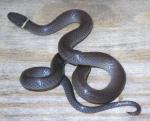
|
Diadophis punctatus edwardsii - Northern Ring-necked Snake
|
Description
The Northern ringneck snake has a body color from bluish grey to black, with a complete narrow yellow or orange ring around its neck and an underside matching the ring and generally lacking any dark spotting or patterning. |

|
Drymarchon melanurus erebennus - Texas Indigo Snake
|
DESCRIPTION:
Texas Indigo Snakes range from south Texas to Mexico. They are often found in grasslands, sparsely wooded forests and scrub lands. They are usually found close to water sources such as ponds, and cattle troughs. Indigo Snakes are black to dark blue in color, with an iridescence shine to their scales. |
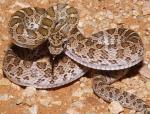
|
GLOSSY SNAKE Arizona elegans
|
DESCRIPTION:
A medium-sized (up to 1,055 mm or 42" in total length) snake with numerous dark-edged, tan, golden brown, or olive-gray blotches on a tan, light cream, pinkish, or gray background. Specimens from far western Arizona often have faded or washed-out looking pattern. The belly is plain pale gray. |
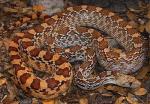
|
GOPHERSNAKE Pituophis catenifer
|
DESCRIPTION:
Arizona's longest snake (up to 2,337 mm or 92" in total length). Base coloration is tan, cream, yellow, orange-brown, or pale gray. |
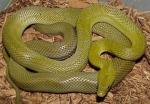
|
GREEN RATSNAKE Senticolis triaspis
|
DESCRIPTION:
A long (up to 1,600 mm or 63" in total length), plain green, yellow-green, or olive snake with a plain cream to light yellow underside. Young are gray to gray-green with prominent gray-brown dorsal blotches. |

|
Heterodon nasicus kennerlyi - Mexican Hog-nosed Snake
|
Description
The Western Hognose Snake is a light sandy brown in color, with darker brown or gray blotching, their coloration is not nearly as variable as the Eastern Hognose, Heterodon platirhinos, but they often have an ink-black and white or yellow checker patterned belly, sometimes accented with orange. |
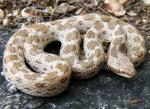
|
HOODED NIGHTSNAKE Hypsiglena
|
DESCRIPTION:
A small (up to about 600 mm or 23" in total length) gray, or tan snake with two rows of small, dark, gray-brown blotches on the back (dorsal blotches). The neck is marked with a broad collar which is composed of a single blotch that is rounded on the back edge. |
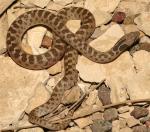
|
Hypsiglena (torquata) jani - Texas Nightsnake
|
Description
The Texas night snake grows from 10 to 16 inches (25 to 40 cm) in length, record 20 inches (51 cm).[1] It is typically a light grey or tan in color, with dark brown or dark grey blotching down the back and an unmarked underside. |
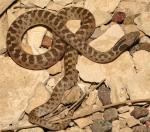
|
Hypsiglena ochrorhyncha klauberi - San Diego Nightsnake
|
Description
The Texas night snake grows from 10 to 16 inches (25 to 40 cm) in length, record 20 inches (51 cm).[1] It is typically a light grey or tan in color, with dark brown or dark grey blotching down the back and an unmarked underside. |
|
|